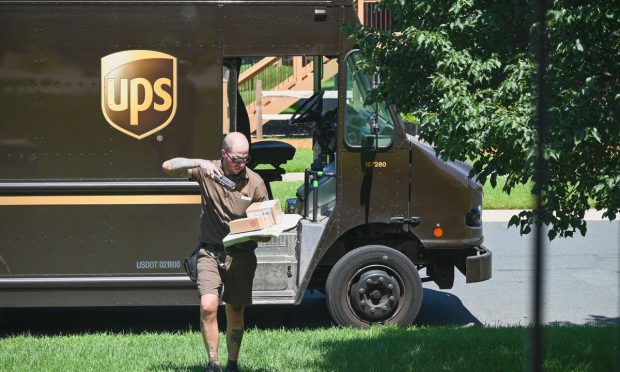Consumer Interest in Experiences Over Goods Puts Drag on Residential Deliveries

Consumers are choosing experiences over goods when spending money, UPS executives report. The company has heard from its customers that there has been some shift in consumer spending from goods to services, they said Tuesday (April 26) during the company’s quarterly earnings call.
“You’re probably experiencing that if you’ve gone on vacations — it seems like the hotels are full, all the planes are full and people are going out to eat,” UPS CEO Carol B. Tomé said during the call.
For UPS, that shift in spending contributed to a 7.4% decline in residential average daily volume of package delivery during the first quarter when compared to the same period the previous year.
The decrease in residential volume was partially offset by a 3.6% increase in business-to-business (B2B) average daily volume. Overall, the total average daily volume in the U.S. was down 3% versus the first quarter of 2021.
External Factors Impacting Retail Sales
The year-to-year comparison of residential volume was also impacted by the fact that U.S. households did not receive stimulus checks this year as they did during the first quarter of last year. The UPS executives noted that those March 2021 checks were spent on goods to be delivered and set a high bar to be matched a year later.
“When the stimulus checks hit last year, we saw our average daily volume jump by 400,000 pieces per day,” Tomé said. “We and our customers thought we could comp that this year, but because of all the external factors that were facing consumers, that proved to be tough.”
Several challenges hit both consumers and UPS during the first quarter, UPS EVP & Chief Financial Officer Brian Newman said during the call. These included Omicron impacting retail sales in January, followed by inflation, a surge in energy prices, COVID-19 lockdowns in Asia and geopolitical uncertainty developing later in the quarter.
A Permanent Shift in Customer Preferences
Looking ahead to the rest of 2022, UPS said in a presentation released along with the earnings call that the company is paying close attention to COVID-19, upstream supply chain constraints, inventory and inflationary pressures and the geopolitical environment.
The company also expects business-to-consumer (B2C) volume to regain the share it held in the first quarter of last year — 60% — by the end of the year.
“In the first quarter, our residential, B2C was 57% of the mix and commercial was 43%,” Newman said. “We had guided for the full year to a 60/40 spread, and we still think that’s a pretty good number.”
Partnerships and pair-ups are also part of the UPS strategy. Direct-to-consumer eCommerce firm ESW launched a partnership with UPS in March to provide users with integrated international eCommerce and shipping capabilities. Also, UPS paired with online marketplace Jumia Technologies in April to expand across Africa.
Read more: eCommerce Firm ESW Launches Partnership with UPS
See also: UPS Partners Africa’s Jumia on eCommerce Distribution Network
Asked by an analyst if the eCommerce gains recorded during the pandemic will be permanent or revert to trend line, Tomé said that retailers have done a masterful job of offering buy online, pickup in store (BOPIS) and other options to get traffic into their physical stores.
While the kind of growth that was experienced during COVID will not be seen again, eCommerce sales will continue to grow, despite the efforts of retail stores.
“So, I admire what they’re doing, but there’s still been a permanent shift in customer preferences,” Tomé said. “Customers want to shop when, where and how they want to shop, and they want their packages delivered to them when, where and how they want them — it might be inside of the store, it might be at their home or at their workplace or at a consolidated pickup point.”
